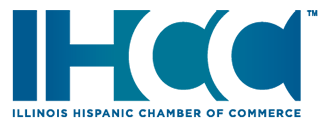The massive stimulus package negotiated between the Trump administration and congressional leaders is an unprecedented $2 trillion aid package designed to help the public and the economy to rebound from the Coronavirus pandemic.
The bill directs $377 billion for loans to small businesses and nonprofits with under 500 employees.
The bill will allow banks to lend directly to businesses, and those loans will be backed by the Small Business Administration.
It could take at least two weeks after the bill is signed into law for the money to begin flowing.
For small business owners — many of whom operate on thin margins — delays could mean the difference between surviving and shuttering their businesses permanently.
Federal authorities know time is tight. Regulators released a statement encouraging banks and credit unions to start making small loans to individuals and small businesses immediately, independent of the stimulus.
The stimulus package is offering small businesses S.B.A.-backed loans to pay for basic expenses.
They would not have to repay portions that were spent on paying employees, a mortgage, rent or utilities.
The banks lending the money would be reimbursed for those portions by the Treasury Department.
Under the new program, individual lenders will be able to use their own paperwork to process loans and can expect S.B.A. approval within two weeks.
Banks will not disburse the loans until the S.B.A. assures them that each is fully guaranteed against default.
Unlike other S.B.A.-backed loans, business owners won’t have to provide personal guarantees or use all their available assets — from real estate to equipment — as collateral.
There are no fees, and interest rates are capped at 4 percent.
The program comes with restrictions:
Loans are limited to $10 million, to businesses with 500 employees or less.
Businesses that have recently laid off workers would be required to repay a larger portion of their loans, and loans covering salaries of over $100,000 a year wouldn’t qualify for forgiveness.
Businesses would not have to repay loans covering up to eight weeks worth of payroll expenses. That means that once businesses receive their loans, a new clock will begin to tick: They’ll have to use the money within two months to avoid repaying it.
Businesses could receive up to $10 million in loans only to:
- float employee salaries
- payroll expenses
- mortgage
- other debt payments
If used for those purposes, the loans would be forgiven in the future. It’s a huge deal if it works properly.
Be prepared to provide the following information:
- Tax Information Authorization (IRS Form 4506T), completed and signed by each principal or owner
- Recent federal income tax returns
- Personal Financial Statement (SBA Form 413)
- Schedule of Liabilities listing all fixed debts (SBA Form 2202)
- You may also need to provide profit and loss statements, recent tax returns, and balance sheets.
IHCC is ready to assist small businesses in receiving SBA loans
We are publishing relevant information, in IHCC’s blog, so our members and associated companies have better tools to withstand the economic crisis unraveling due to the spread of the virus.
All types of information requests are answered through [email protected]. Please do not hesitate to email us.
If you are a small business owner in Illinois and require immediate help, you can contact Silvia Bonilla, Director of the Illinois SBDC program operating at IHCC. Contact: [email protected]

